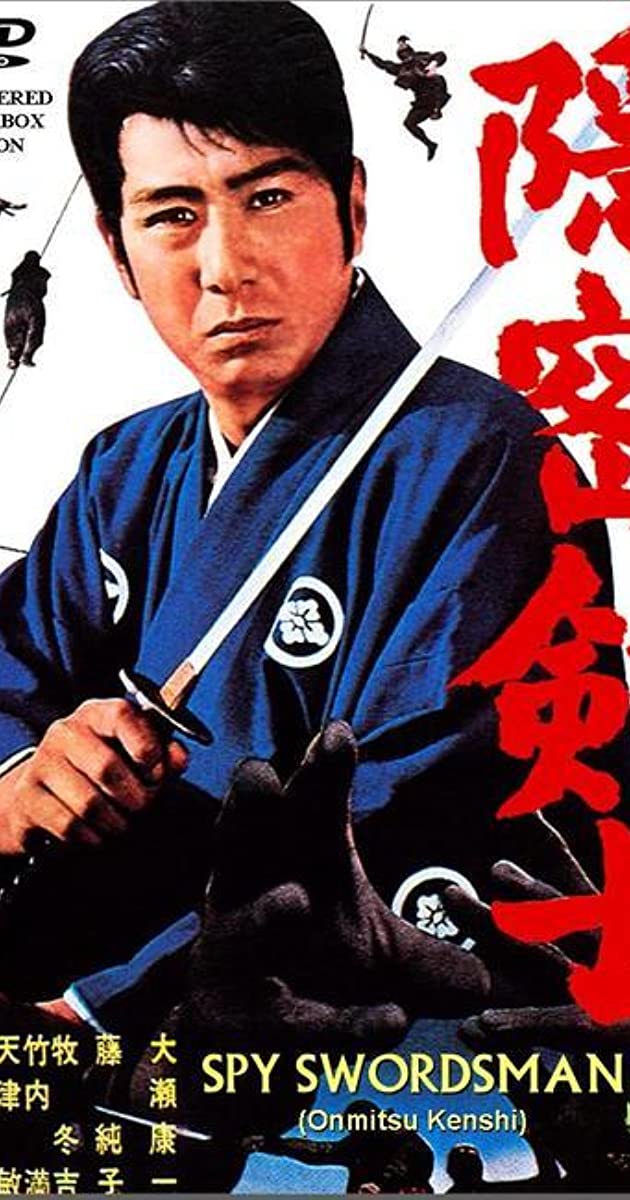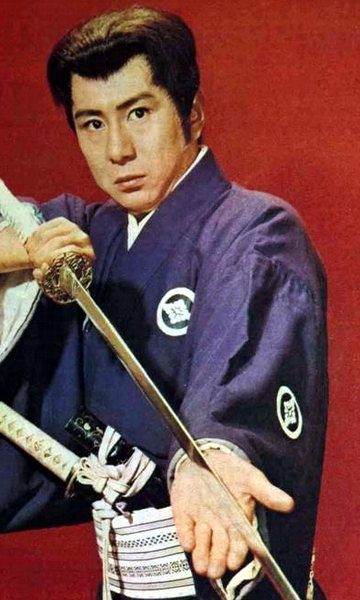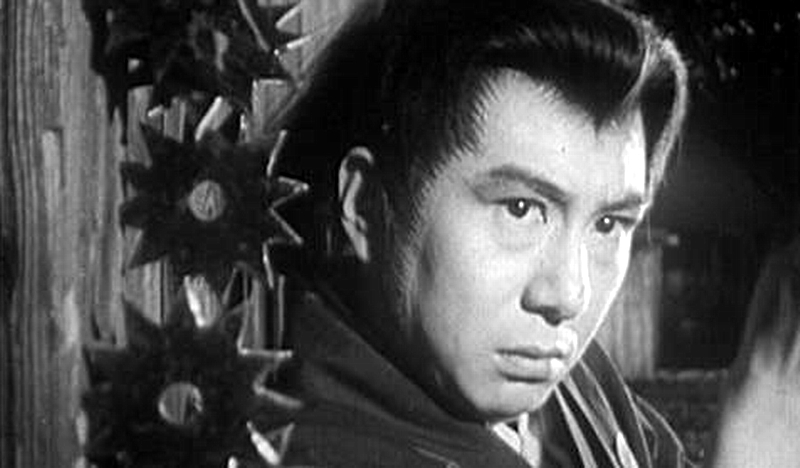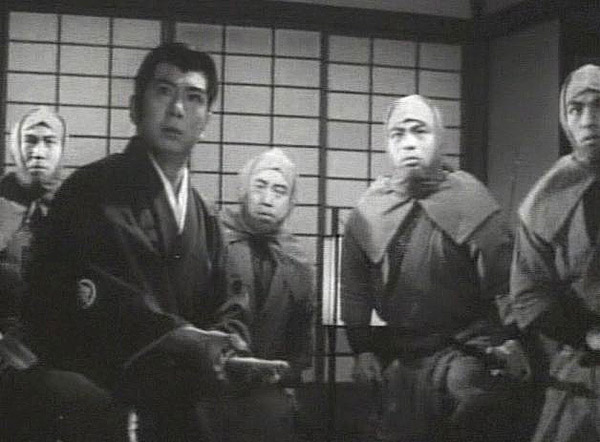Detective Fencer

Year: 1964
Director: Funatoko
Sadaio
Rating: 7.0
Aka - Onmitsu Kenshi
Aka - Spy Swordsman
The English translation of the title to
Detective Fencer seems a bit off since there is no detective in our sense
of the word and fencer seems much too polite. Spy Swordsman is closer to
the mark. But if I had come up with an English title it would have been Ninja
vs Ninja,a Samurai and a Boy. Ninja films were a big craze in Japan in the
first half of the 1960s - some classics like Shinobi-no-Mono and Samurai
Spy are pretty well known but most are not outside of Japan - many of them
were shot in black and white and are not easy to track down. This film is
Ninja infused - they are everywhere - you go to the bathroom and you have
to expect a ninja on the ceiling ready to kill you when you have your pants
down. They pop up out of nowhere and vanish just as quickly like Republican
politicians avoiding answering questions. Nearly every ninja device you see
in future ninja films are used here - so many deadly stars being tossed around
that there must have been a sale at the Ninja store, blow pipes, acid mist
spit in the face, jumping up into trees, fire surrounding defense, fog attack,
the old face replacement trick, listening in from underneath the floor and
so many more. Literally from the opening scene and through much of the film
it is ninjas attacking ninjas and the Samurai and his son (no, not Lone Wolf
and Cub). It is a lot of fun, a lot of death and not a lot of laughs. The
way a ninja film is meant to be.

This film comes from a very popular TV
series that ran from 1962 to 1965 of the same title but translated simply
to Samurai when it was syndicated to Australia where it was such a hit that
when the star came to visit he was met at the airport by crowds. The star
of the TV series is the same star as in this as is his righthand man. It
was on DVD with subs or dubbed at one point though now Amazon says Unavailable.
A few episodes seem to be up on YouTube. I think the makers of the film assumed
audiences had some background in the story and characters because I initially
found it confusing as hell. And even by the end I was still puzzled by what
just took place exactly. There were good guys and bad guys - Ninja clans
thankfully in different colored ninja outfits - and they kill each other
but what exactly was the purpose of the mission was not clear to me.

The Koga Ninjas dressed in traditional
black ambush a Lord in his procession and have it well planned out at they
use arrows, stars, bombs and a collapsing bridge to kill all his protectors
and then him. The Shogun's - 200 years it says into the Tokugawa era - advisors
think they know who is behind this assassination and others but need proof
and so they get their Ninjas - the Iga - to find a scroll of the contract
between the Owari House and others to overthrow the Shogun, who is a young
boy at this time. The Iga against the Koga is based on history and shows
up in a number of films and TV shows. The Iga sadly for them get stuck having
to wear gray which is not nearly as cool.

During their mission the Iga come across
a Samurai peacefully fishing with a ten year old boy when an Iga Ninja comes
out of the water with his dying words. The Samurai Shintaro (Koichi Ose)
is then attacked by the Kogas and handles himself surprisingly well. He is
the hero of the film and the TV series. Turns out that he is the older -
much older - half brother of the Shogun and was born to a concubine. He ends
up leading the Iga on their mission - with the Koga 13 against the Iga 13
- along the way they start killing each other off. The leader of the Iga's
is Tonbei (Maki Fuyukichi ) who is with Shintaro in the TV series. Along
the trip to Owari in which Shintaro inexplicably brings the boy - they meet
a lady in distress - needing to visit her sick mother - played by the great
Junko Fuji. Of course it is a deception. She is Ninja! Watch your back!

In the TV series from what I have read
Shintaro and Tonbei roam the country putting out plots to overthrow the Shogunate.
That sort of helps explain the film but not entirely. Ose is not the most
masculine of Samurai - he looks more like he is going on stage in a Kabuki
play with his soft face very pale and his mannerism and facial expressions
rather feminine. Junko was not a star at the time but she soon would be.





